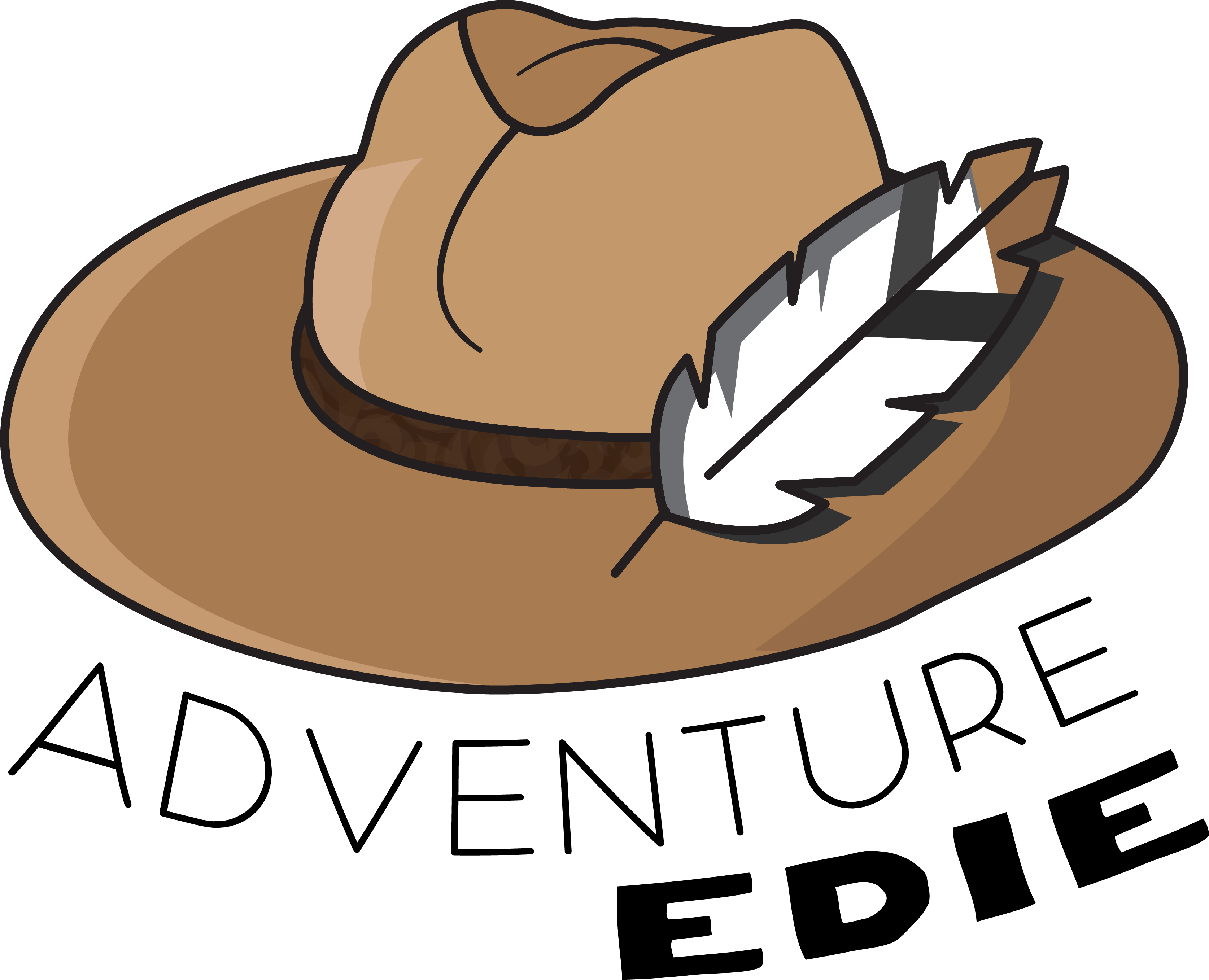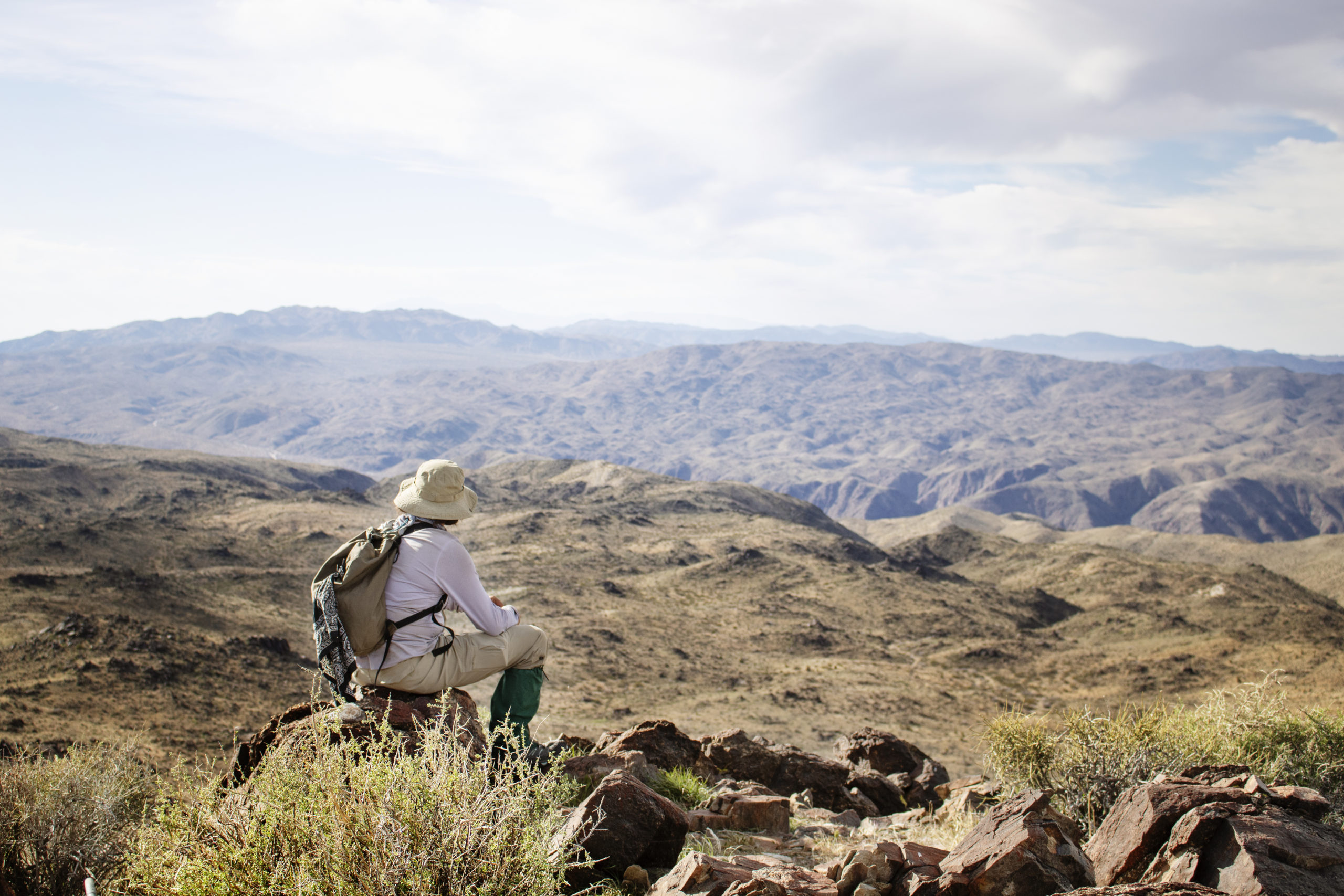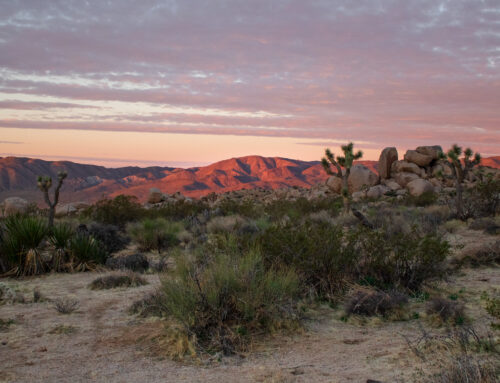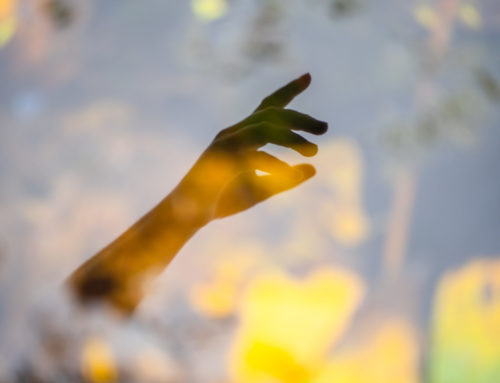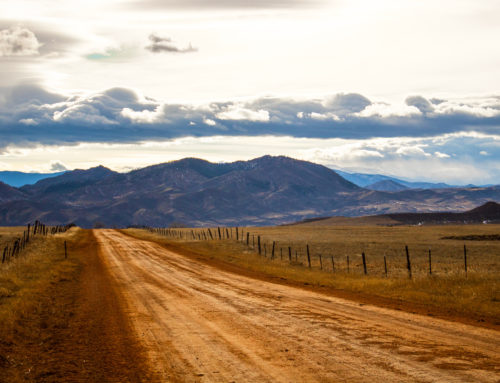Freedom in the Absence of Humans: A Wilderness Philosophy
May 1, 2020
When I was 13 years old, I read John Muir’s My First Summer in the Sierras every night before I went to bed. I would read it and re-read it, picturing every vivid scene as I fell asleep. I was stunned by his ability to walk into the mountains with just his journal and a loaf of bread tied to his belt and spend days sitting in nature. It was a foreign concept to me, to be able to walk for days and not run into fences, to leave for a night and not be missed by anyone. He wrote that he found a big, moss-covered boulder in the middle of a stream, and, finding it a comfortable spot to lie down, decided to stop there to sleep for the night. I was enchanted. I yearned for that kind of freedom. His writing spoke to me, made me dream of big adventures where I could be immersed in nature for miles and where I could really escape humanity.
Though I searched, I never found it during those childhood years. I would go on hikes with my parents but wasn’t allowed to walk too far ahead. I would have to be back by a certain time, couldn’t go off trail, couldn’t wander on places that weren’t public trails. I would run into fences and no trespassing signs and roads and things that told me to stop wandering, stop searching. Playing in nature had been criminalized, as Richard Louv explains in Last Child in the Woods. “Countless communities have virtually outlawed unstructured outdoor nature play, often because of the threat of lawsuits, but also because of a growing obsession with order.” (Louv, 2005). Communities demanded that private property be obeyed, that forts and bike ramps be deconstructed. Parents became hesitant to allow their children outside unsupervised. It wasn’t safe for me to go explore the outdoors by myself. I wanted to wander for miles, to see what I could find and explore where I’d never been. But it was too dangerous. Too many things could have taken me and carried me away: mountain lions, strangers in white vans.
It wasn’t until my Immersion Semester Program as part of my degree plan in college that I found this ability to wander out into the open, to really explore. To find that wilderness that I so desperately sought.
I found this solace in the desert. Over the course of a month, we hiked for 92 miles through cacti and creosote, canyons and basins and forests of Joshua Trees in Joshua Tree National Park in Southern California. We watched the sun rise and fall in the sky every day, tracked the patterns of the clouds and the wind. And the biggest thing – we rarely hiked on a trail. We almost never saw another human. We never ran into a fence, only occasionally crossed a road. We walked for days without ever seeing a sign of another human. I could sit for hours and listen and hear nothing humanmade except my own breathing. We were in true wilderness, a wide-open place that seems empty but in fact is full of everything. Everything we’ve forgotten as a species when the roads were paved up the mountains and the telephone wires tamed the West.
The wilderness we found was soul-settling. It was free of distractions. There were no man-made things to pull you out of the moment, nothing that made you wish it wasn’t there. It was just wide-open space, full of rocks and animals as important to the land as the sunshine itself. Everything was in its place, exactly as it should be.
Wilderness is freedom in the absence of people. It is so hidden, so difficult to access in this age. We see glimpses of it in our normal lives – those Instagram pictures from those who’ve gone before, the view we see out our windows as we drive a scenic highway and look over the edge of the road. Our whole lives we are aware of land beyond humans, from those hidden valleys in the distance to the windy summits of mountains to the vastness of outer space through which we may never travel. It enchants us, inspires us, puts an itch in our feet to go out, find more. Many never follow it, most will never find it. Not this ‘true’ form of wilderness, this ‘pure’ kind of unadulterated land.
And yet, we seek it. Difficult as it is to find, many people leave their houses and their cities in search of something wild, something natural, an escape from the lives they live. They head into developed recreation areas and state forests where the roads and people are nearly as plentiful as the suburbs – but they find what they are seeking. They find places where there is an absence of human presence, a lack of skyscrapers and excessive noise and exhaust fumes. They seek the warm sunshine and clean air. And if they find this escape from humanity in these spaces of ‘tamed’ wilderness, I think there is room for a kind of place in between, less pure than ‘true’ wilderness but more accessible, and therefore life sustaining to those whose rivers have been dammed, their valleys subdivided, their deserts mined. This idea of wilderness can live in the mind, and therefore be found when it is needed most by those who seek nature without humankind.
Wilderness is an idea, a concept of something inconcrete that exists outside of us. It is difficult to define the feeling of wind on a mountain top or the view of sunrise over miles of distant plains, yet innately we know that this is a feeling of wilderness and vastness beyond ourselves. Our idea of freedom in the wild natural world is invigorating, sustaining. The idea of wilderness alone can sustain an adventurer, even in those tamed wilderness spaces in the state campground.
Though the idea may escape definition, ‘pure’ or ‘true’ wilderness is defined by something concrete and does not live simply in the minds of the American public. It is defined by the “Wilderness Act” and lines on a map. It has boundaries: areas that are and those that are not. Wilderness by definition as “an area where the earth and its community of life are untrammeled by man, where man himself is a visitor who does not remain.” (The Wilderness Act, 1964). To find wilderness, true wilderness, you must travel far. You have to search, intentionally seek, in order to know. This is the kind of wilderness we only ever get a glimpse into from the car window as we wiz by at 50 miles per hour to the next scenic pull-off. Those hills far in the distance that seem a moment frozen in time from before we arrived, before we changed the planet. Those places that spark the imagination but never allow the spark to be satisfied.
This is where I spent my month in the desert: those far away corners of Joshua Tree National Park that call to you from the road but don’t open their doors to you. The experiences you have in those places are so much different from the ones we use to satisfy our craving in those easy-to-reach outdoor spaces. The experiences in wilderness are palpable and fundamental and changing. You learn to see things you didn’t know existed before. You learn your place in the world. You learn you are just a speck on a rock in a vast and timeless landscape. You learn the meaning of wilderness.
~~~
I sat on a rock for nearly 72 hours and stared at the light changing over the mountains. I saw how morning dyed the distant mountain range pink and orange, how the Joshua Trees stood out as silhouettes in front of those glowing and rosy peaks. I saw how midday sun illuminated every crack and bush on those distant slopes, how the sharp light turned the rocks white and pale and how the earth absorbed the sunlight to warm and feed itself. I watched how afternoon golden light poured over the mountains in the west, casting palpable sunbeams across the cholla needles and the white seed pods on the creosote. Everything glows in the desert in this afternoon light. The landscape is golden and full of color and a richness so deep and pure it is impossible to describe. I watched the sun set and the moon rise and the stars come out, the horizon fading from yellow to lavender to a deep blue. I sat on a rock and watched the world spin and the animals move and the plants grow.
I was on my solo, an Outward Bound tradition, and except for times when I was sleeping or peeing or doing things like cleaning or yoga, I sat on a rock and watched the light by myself. I did not talk. I listened to the hummingbirds fly by, racing around the boulders and stopping to drink nectar from the flowers not 5 feet away from me. I watched a nest of red-tailed hawks leave their crack in the rock to hunt and return successfully to their mate. I watched lizards flit up and down the rocks, stopping to inspect my presence and, deciding I was not very interesting, continue on their way.
In those moments, alone with my thoughts and the natural world, I truly felt what wilderness was. This ecosystem had survived for ages without me, and now I was simply a visitor. I was clearly in their territory, a stranger at their doorstep. I could feel the history and sentience and life humming from every corner. Every plant served its purpose, every animal had its own place. The wildflowers were just beginning to bloom and new life was erupting out of the desert floor. This was a world apart from any I’d ever witnessed before, a world apart from anything we could ever experience in those places where humans rule the environment.
While I stared at the light changing over the mountains, I let my mind drift for hours at a time. I reflected on the relationships I had built so far on the trek, the kind of life we were living. I’d never formed such deep and honest connections with a group of individuals so quickly. Within days we were sharing some of the deepest parts of ourselves to the group, crying together on mountaintops and sharing gentle eye contact as each told their most personal stories. We had bonded instantly. Unexpectedly, the desert wilderness had opened an incredible space within ourselves to this kind of reflection and openness and gratitude. The desert is quiet, free of noise. It is quiet of mind. While sitting on that rock I could go hours without hearing anything even remotely humanmade until a passing airplane would break the silence. Of course, the silence is not true silence. It is loud. It is full of humming insects and calling birds and the sound of wind through the spines of the yucca plants. But the human brain finds solace and silence in those noises that don’t contain us. And in that desert silence, the mind can open up, the heart can let go, and close bonds can be formed.
As we hiked, we faced challenge: brutal pains and weather. One morning we woke at 5 am to snow. We hiked in the bitter cold and wind all day with 50 pounds on our backs. We summited mountains, we wrestled brambles, we fought our way through washes and canyons. Each step we drew closer to each other and farther away from the walls we’d built to keep the rest of the world out. Each step we lived a more honest life than the one we lived ‘out there,’ in the ‘real world.’ We communicated openly and shared what bothered us and worked through our problems together. We felt every necessity of life in its raw form. We carried the water and food we needed on our backs, we scouted places to make camp and we cooked our meals. We realized that this, in fact, was the ‘real world.’ This was the real living, the bare necessities and honest connection and nothing to distract us from that. There was no fakeness, no idleness. It was healthy and pure. It was transformative.
To live in this way for so long, it would be difficult not to find the beauty of life outside. It is nearly impossible to not feel that you are a small speck in something larger, something natural and completely self-sustaining. All it needs is to be left alone and it will arrange itself in the most impressive and beautiful display of natural wilderness.
It hasn’t been left alone.
~~~
The last remaining spaces of wilderness inside those lines on the map are few and far between, and they have not completely escaped human presence. No matter where they are or in what ecosystem, our wild places are still scarred with human impact. We found bullet casings on mountaintops, mylar balloons in canyons. Hardly any spaces of this ‘pure’ form of wilderness remain untrammeled by man. The sounds and sights of human development are ever-present and inescapable. Even in the Joshua Tree wilderness, airplanes would fly through daily. We could see the distant lights of Palm Springs, California on the horizon at night. As Bill McKibben says in his book The End of Nature, “the sound of the chain saw doesn’t blot out all the noises of the forest or drive the animals away, but it does drive away the feeling that you are in another, separate, timeless, wild sphere. Now that we have changed the most basic forces around us, the noise of that chain saw will always be in the woods.” (McKibben, 1990)
Sitting on a hill just East of Quail Mountain, I observed in my journal:
“The wilderness cannot be written about without the presence of humanity that we’ve written in every corner. The sound of an airplane high overhead and the contrail it leaves in the clear sky. That road in the distance and a building at the end of it, unidentifiable. That haze in the distance that is most surely us. And those tarps down in the valley. Our tarps. Our impact. Our footprints are down there, too. Impermanent but resoundingly ours, our impact on this world.”
Even where roads and buildings cease, air pollution finds its way into the wildest places. The haze from Los Angeles and other major California cities create smog full of nitrogen that affects the fertility of the soil in Joshua Tree National Park. Invasive grasses flourish, stealing valuable water and space from the native desert plants. The warming climate, a result of greenhouse gas emissions, has the potential to push the iconic Joshua Tree to extinction in the next 100 years. (Wisneski, 2016). Those who came to wilderness to find warm sunshine and clean air come to find something that no longer exists. Clean air is a mirage.
Global warming, climate change, and air pollution are vast problems with no easy solution. The action needed to stop or even reverse the effects of climate change are either too drastic or too advanced to combat before the problems begin to have dramatic impacts on human lives. (Gage & Gage, 2012). Even today, widespread drought, frequent wildfires, and increasingly devastating storms are signs that we have already reached the tipping point. We have pushed the climate to such extremes that we have interrupted natural rhythms and systems and created dramatic weather conditions. We have pushed thousands of species to the brink of extinction, wiping out species before they are even catalogued by humans. We have melted massive ice sheets and glaciers. We’ve caused sea levels to rise. Human encroachment has come too far into the wild places to ever truly disappear.
We cannot reverse what we have already done. We have gone too far. We cannot bring a species back from extinction. We do not have the technology available to change the climate back to its pre-industrial state. Now, we must work to save what’s left, to minimize our impact going forward to prevent even more disastrous events from unfolding. We must prevent those last wild spaces from going too far in the wrong direction, keep roads out and ecosystems as intact as possible so they can try to fight the changing climate on their own.
Our history shows our inability to ‘leave it alone.’ Where there are no roads, there are dams. Where the dams block the water, they block the fish. They create reservoirs where once were rivers. They drown beautiful valleys and flood historic sites. They create scars on the rock from high-water lines and do little to satisfy the drought in the plains below. Even in pristine wilderness areas, dammed rivers can affect if fish are able to reach those areas where they spawn. The entire ecosystem, reliant on spawning fish, can be affected. (Rummel & Stoecker, 2016).
In areas where the Wilderness Act doesn’t legally protect the land, another threat destroys habitat and blocks migration routes for millions of animals. Oil development in pristine areas can destroy those places where roads have yet to reach. Plots of land arbitrarily auctioned off destroy sections of wildlife corridors, or places where animals travel and migrate. The auctions often aren’t legal, but the government turns a blind eye. (Gage & Gage, 2012). Any amount of oil development can alter forever fragile ecosystems and migrating species. A single pipeline in Alaska’s arctic could mean disaster for migrating caribou, who calve on the coastal plain. Migrating and pregnant animals are particularly susceptible to development and could be blocked from ancient migration patterns that have been in place for thousands of years. (Heuer, 2008).
There is hope. Those who deeply love and care about these wild spaces fight to protect them from these kinds of development. A recent movement to remove dams that have damaged ecosystems and fish populations resulted in the removal of several dams that block major watersheds. Within a year of the removal of the dam, fish populations and the river ecosystem had recovered dramatically. Sometimes all we need to do is open up the environment to its natural functions and it can heal itself remarkably quickly. (Rummel & Stoecker, 2016). Grassroots-based protests against oil pipelines, drilling, and mining can be effective in stopping oil development. Protecting those wild areas from human encroachment is the most important step to maintaining and preserving the ecosystem. The action and passion of people dedicated to those wild spaces can make a difference and improve the environment dramatically.
However, few people have experienced these wild places. The places that people don’t see and don’t go are the easiest ones to pawn off. It is too remote, too unknown. A sale of land to an oil developer on the far reaches of the artic will likely go unnoticed by the majority of people. Out of sight, out of mind. You cannot truly know the deep beauty of a place until you have been there, until you have seen it and experienced it for yourself.
Few people travel to those remote areas. Those who have led passionate revolts against development have been the few who have experienced the are first hand, who have fallen in love with those natural spaces. So few have gone there. So many people are satisfied with the state parks and tamed campgrounds and scenic drives that substitute the ‘real’ wilderness for their idea of wilderness.
Yet they know it exists. They know it is important. From your road-side pullout you can see into the vastness of wilderness and marvel at its beauty. From your lawn chair next to your RV at the campground, you can sense the majesty in the age-old trees in the forests that stretch out before your eyes. You may never go explore them, but somehow, primitively, you know that it is important. You can sense, deep within your being, that those places are infinitely valuable, worth protecting, if only to be seen from the outside. There are few opportunities for us to explore the wilderness, but so many opportunities for us to peer into it through the window, to look and dream and feel that pull of wilderness. You know it’s essential. You can’t explain why, having not been there, but you know.
That’s how those first few squares of Wilderness land gained their protection. That’s what enabled congress to set aside plots of open space as Wilderness. The masses do not go to Wilderness. That’s what makes it special and wild. But the public who has gazed through the window at wilderness knows its value. Those few individuals who have had the privilege to go there have the power to speak for it, speak about it, share their findings and revelations. The public drinks it up in their insatiable thirst for wilderness. They become educated about the space. They begin to care. And so, change is made. Lands are protected. People become champions for animals and plants and mountains and rivers.
This is my intention. I am a storyteller, both by passion and by trade. I have found that there is incredible power in the stories of wilderness, in being able to tell those who dream but cannot find about those things that they desire. Just as John Muir spoke to me from my bedside at age 13, so I hope that my messages can ignite dreams of places intrinsically valuable. I can educate and inform. I can teach people about things that they didn’t know existed, open up those windows we look through and turn them into doors. My intention is to spend my life close to wilderness, to live with it and through it, and thereby to help it. I can be the person who has gone before. I can be the story that sparks dreams. I can be the hand the shows the difficult truth, that tells you, “What we humans have done is pretty messed up.” There is incredible power in that.
My words can never truly explain what wilderness is. My words and images will never do justice to those intangible things that I found out there in the desert. I will never be truly able to share the feelings of laying under the stars, of smelling creosote in the rain, of waking up to both sun and snow, of carrying a heavy pack up a mountain. Of getting lost down a wash in the middle of the night. Of seeing the desert flash flood and realizing that the desert is not defined by lack of water but instead sculpted by its presence. How can I possibly explain those things to those who have never been?
My challenge to you, then, is to find your own wilderness. You have to understand the sounds of the wind in the trees before you can really desire the preservation of wilderness. And as I’ve said before, you may not have to go to those lines on the map. You may be able to find your freedom in the absence of people. You must experience. I cannot feel it for you.
Eventually, you will have to leave your wilderness. It will feel like you are leaving a part of your soul behind. There is no getting around that. You will form a connection to the place so deep, when you truly find wilderness, that you will no longer be able to separate your identity from it. If you are not sure if you really experienced wilderness or if you just looked through the window, see where your soul is when you leave and you will know.
So maybe that’s what wilderness is. As alpine author Rene Daumal says, “You cannot stay on the summit forever; you have to come down again.” We must leave the wilderness, whether we are ready or not. Maybe wilderness is just a space in the mind, an openness of the heart or spirit, a memory that lingers and makes us restless, makes us itch for that next time that we can bask in clean sunshine and feel that pure air. But it is the idea that sustains us. The memory, even if not our own, of things found where the roads end. It puts that idea in our minds and tickle in our feet and we move towards it, whether we know it or not. Whether we reach it or not. Wilderness envelops you, consumes you, begs you to return. That urge, that insatiable urge to go and never come back again, that’s what wilderness is.
Works Cited
Gage, B., & Gage, G. (Directors). (2012). Bidder 70 [Motion Picture].
Heuer, K. (2008). Being Caribou. Milkweed Editions.
Louv, R. (2005). Last Child in the Woods. Workman Publishing Company.
McKibben, B. (1990). The End of Nature. In J. Elder, & R. Finch, The Norton Book of Nature Writing (pp. 1120-1130). W. W. Norton .
Rummel, T., Stoecker, M. (Producers), Knight, B., & Rummel, T. (Directors). (2016). DamNation [Motion Picture].
The Wilderness Act (September 3, 1964).
Wisneski, B. (Director). (2016). Joshua Tree: Threatened Wonderland [Motion Picture].

